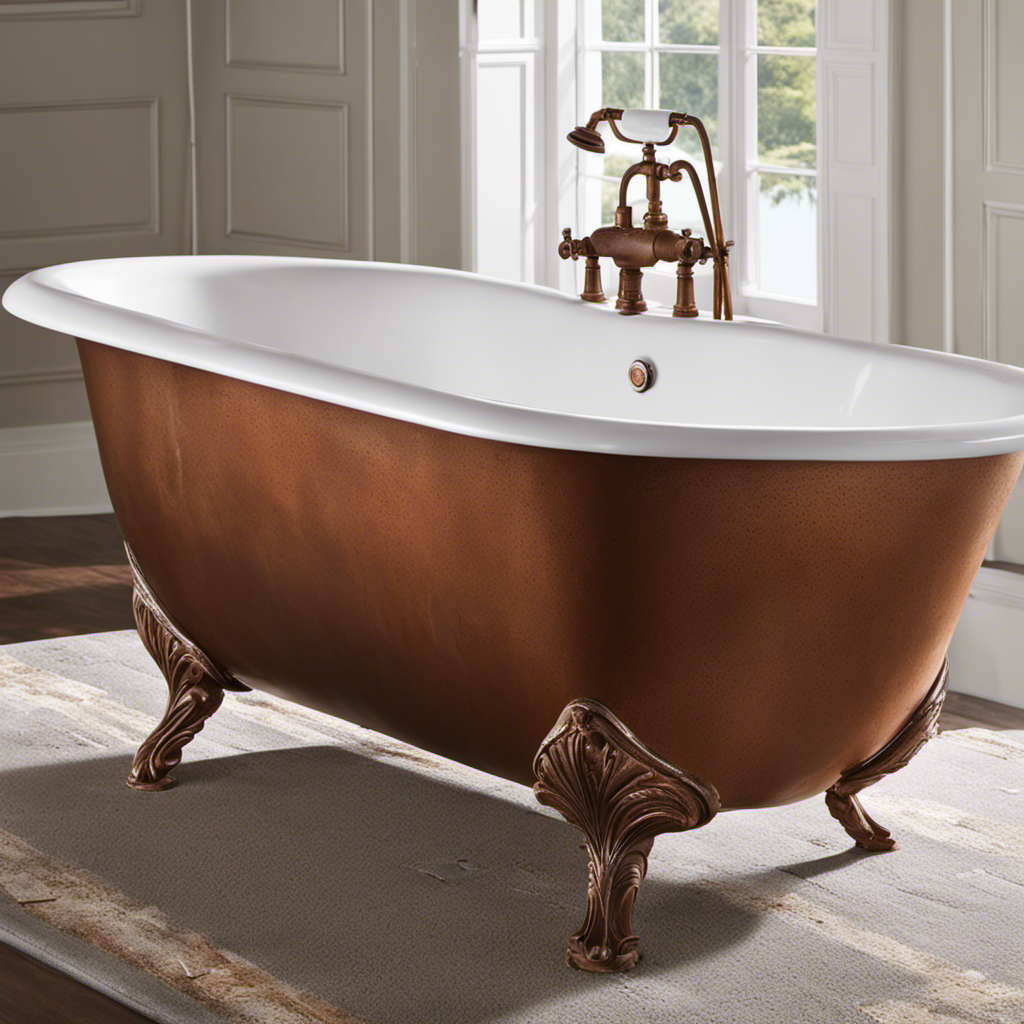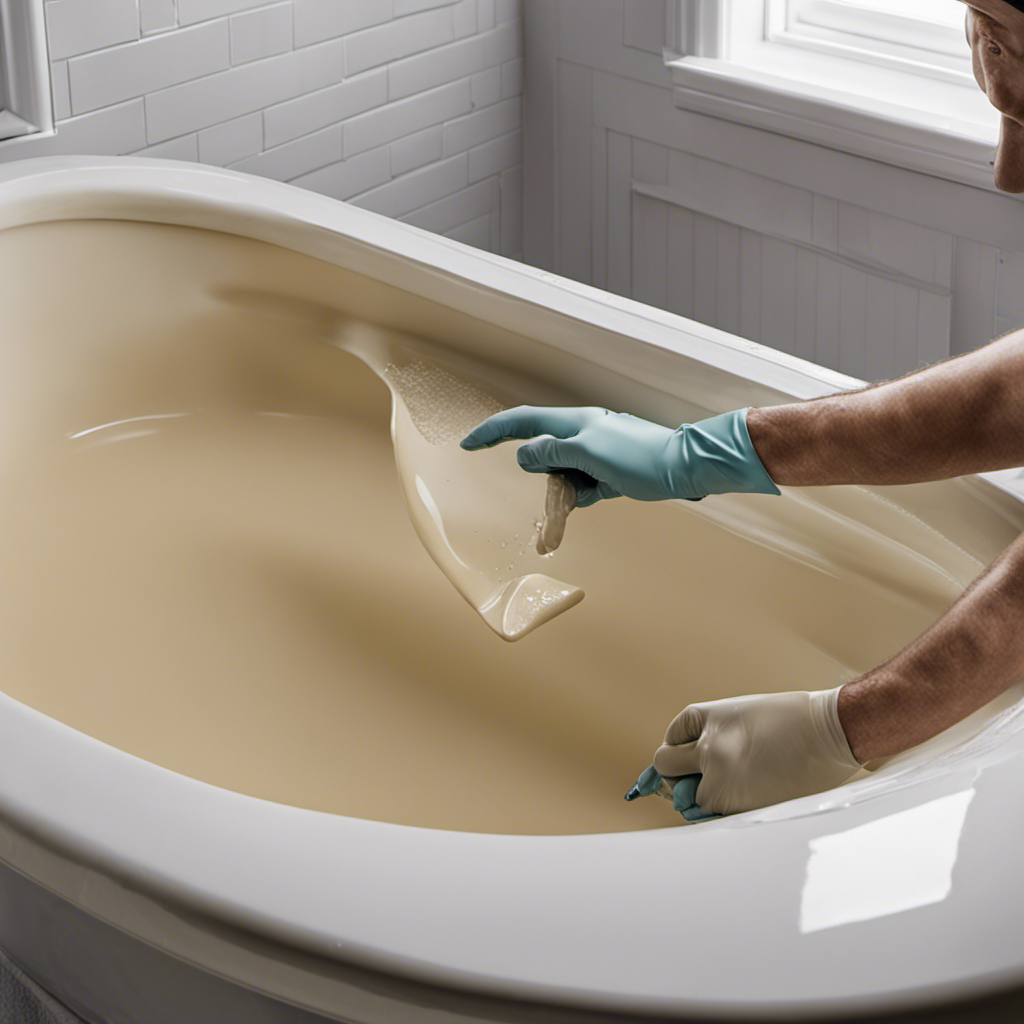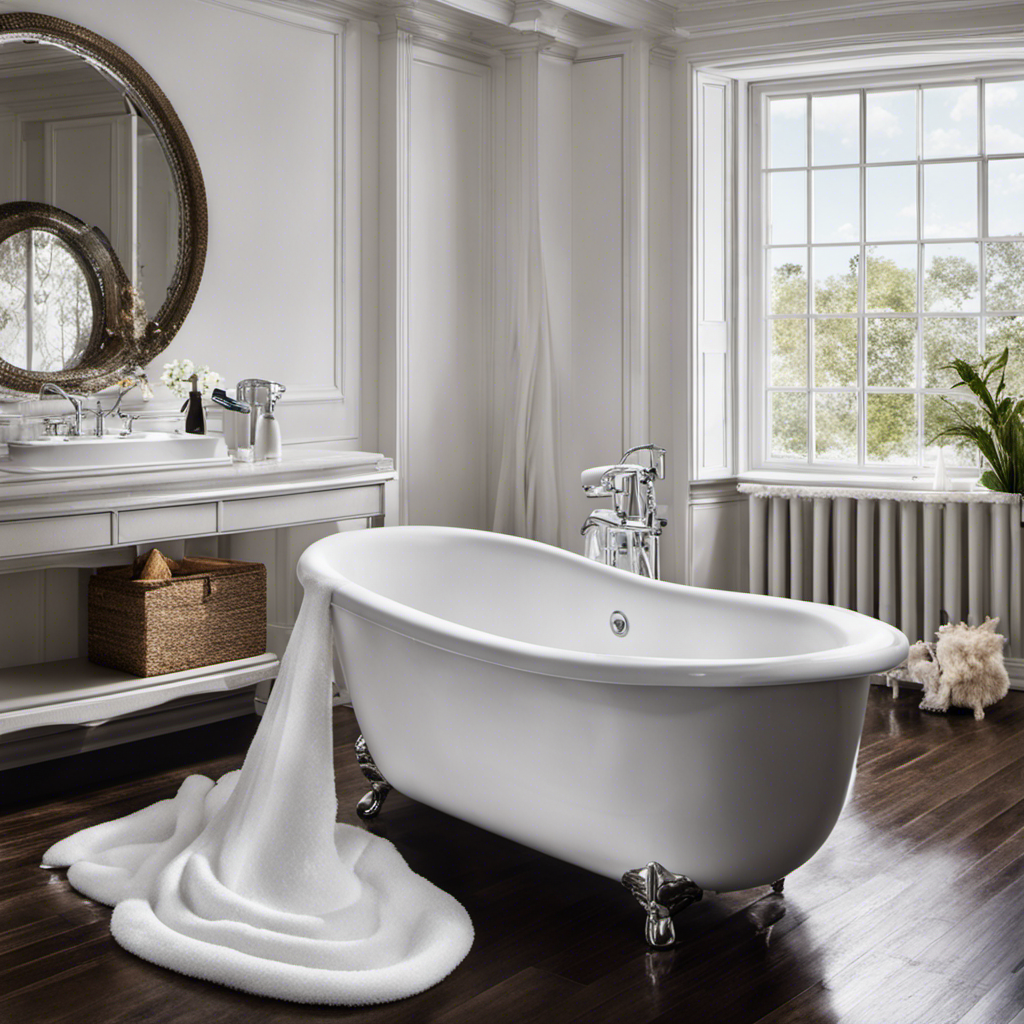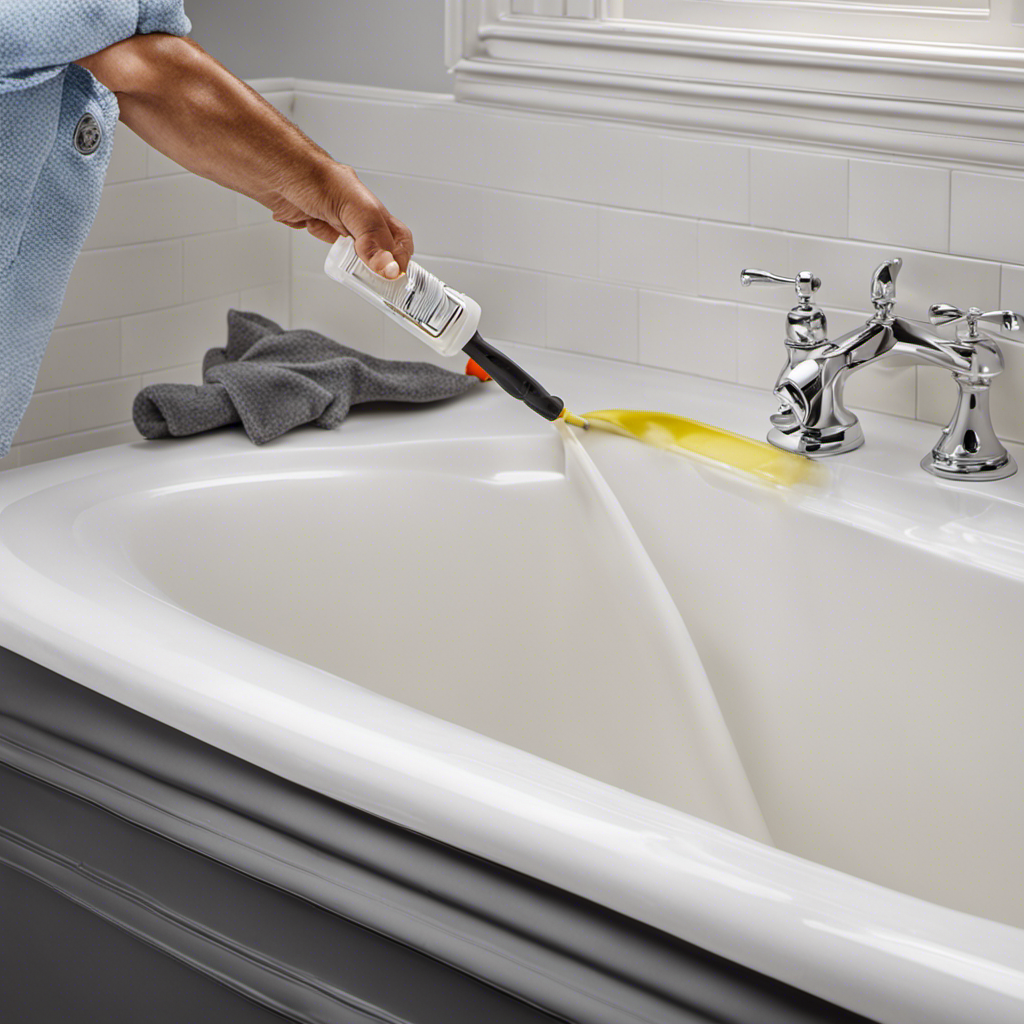Hey there! So, you’ve noticed a bit of rust in your bathtub, huh? Don’t worry, I’ve got you covered.
In this article, I’m going to show you exactly how to fix that pesky rust and restore your bathtub to its former glory. We’ll dive into the causes of bathtub rust, assess the damage, and then get down to business with some tried-and-true methods for removing those stubborn stains.
So grab your gloves and let’s get that bathtub looking brand new again!
Key Takeaways
- Regular bathtub maintenance can prevent rust.
- Use gentle cleaners specifically designed for bathtubs.
- Assess and address rust damage promptly to prevent further deterioration.
- Apply a fresh layer of protective coating to restore the surface and prevent future rust formation.
Understanding the Causes of Bathtub Rust
Understanding the causes of bathtub rust can help you prevent future damage. Rust formation in bathtubs is often caused by a combination of moisture and metal exposure. When water comes into contact with the metal components of your bathtub, it can lead to rust formation over time.
To prevent rust, it is important to practice regular bathtub maintenance. Firstly, make sure to dry your bathtub thoroughly after each use to minimize moisture accumulation. Additionally, avoid using harsh cleaning products that can damage the protective coating on the bathtub’s surface. Instead, opt for gentle cleaners specifically designed for bathtubs.
Lastly, consider applying a rust inhibitor or sealant to further protect the bathtub from rust formation. By following these simple steps, you can maintain a rust-free bathtub for years to come.
Assessing the Extent of Rust Damage
To accurately assess the extent of rust damage, you’ll need to thoroughly examine the affected areas. Evaluating corrosion is crucial in determining the best repair options for your bathtub. Here is a helpful table to guide you in evaluating the severity of the rust damage:
| Severity Level | Description |
|---|---|
| Mild | Small spots of rust or light discoloration |
| Moderate | Larger patches of rust or moderate discoloration |
| Severe | Extensive rust or deep corrosion |
Once you have determined the severity level, you can then move on to determining the repair options. For mild rust damage, a simple cleaning and touch-up with a rust-inhibiting paint may be sufficient. Moderate damage may require sanding, filling, and repainting. In cases of severe rust, it is recommended to seek professional assistance for a complete restoration or replacement. Remember, addressing rust damage promptly will help prevent further deterioration and extend the lifespan of your bathtub.
Removing Rust Stains From the Bathtub Surface
Removing rust stains from the surface of your tub can be easily done using a mixture of vinegar and baking soda. Here’s how to do it:
-
Create a paste by mixing equal parts vinegar and baking soda in a small bowl. The vinegar’s acidity will help dissolve the rust, while the baking soda’s abrasive properties will scrub it away.
-
Apply the paste to the rust-stained areas of your bathtub using a soft cloth or sponge. Make sure to cover the stains completely and let the paste sit for at least 30 minutes to allow the vinegar and baking soda to work their magic.
-
After the designated time, use the cloth or sponge to scrub the stained areas in a circular motion. The rust should start to loosen and come off the surface of the tub.
-
Rinse the tub thoroughly with water to remove any residue from the cleaning mixture.
Regular bathtub maintenance is essential to keep rust stains at bay.
Repairing and Restoring the Bathtub’s Protective Coating
Applying a fresh layer of protective coating can help restore and preserve the surface of your tub.
When it comes to restoring bathtub shine and choosing the right bathtub repair products, there are a few key factors to consider.
First, assess the condition of your tub. Is it just the shine that needs restoring, or are there deeper issues like cracks or chips?
For restoring shine, consider using a bathtub refinishing kit that includes a high-quality epoxy coating. These kits typically come with everything you need, including instructions for a smooth application.
Make sure to thoroughly clean and dry the tub before applying the coating. Follow the instructions carefully and allow sufficient drying time.
With the right products and proper application, you can easily restore the shine and protect your bathtub for years to come.
Preventing Future Rust Formation in the Bathtub
Regularly cleaning and drying your tub after each use can help prevent future rust formation. Here are three effective methods for preventing rust in your bathtub:
-
Use a non-abrasive cleaner: Choose a bathtub cleaning product that is specifically designed to remove soap scum and prevent rust. Look for cleaners that are gentle on surfaces and will not damage the protective coating of your tub.
-
Apply a protective sealant: After cleaning your tub, consider applying a protective sealant to prevent rust. This will create a barrier between the water and the surface, reducing the chances of rust formation.
-
Keep the tub dry: After each use, make sure to thoroughly dry your tub. Moisture can accelerate rust formation, so wiping down the surfaces with a towel or using a fan to circulate air can help prevent rust from forming.
Conclusion
In conclusion, fixing rust in a bathtub is a doable task that can be easily tackled with the right knowledge and tools.
By understanding the causes of rust and assessing the extent of damage, you can effectively remove rust stains from the surface.
Repairing and restoring the bathtub’s protective coating will ensure its longevity.
And by taking preventive measures, such as regular cleaning and using rust-resistant products, you can keep rust at bay and enjoy a rust-free bathtub experience.
So, don’t let rust take over your relaxation time, take action and restore your bathtub to its former glory!










